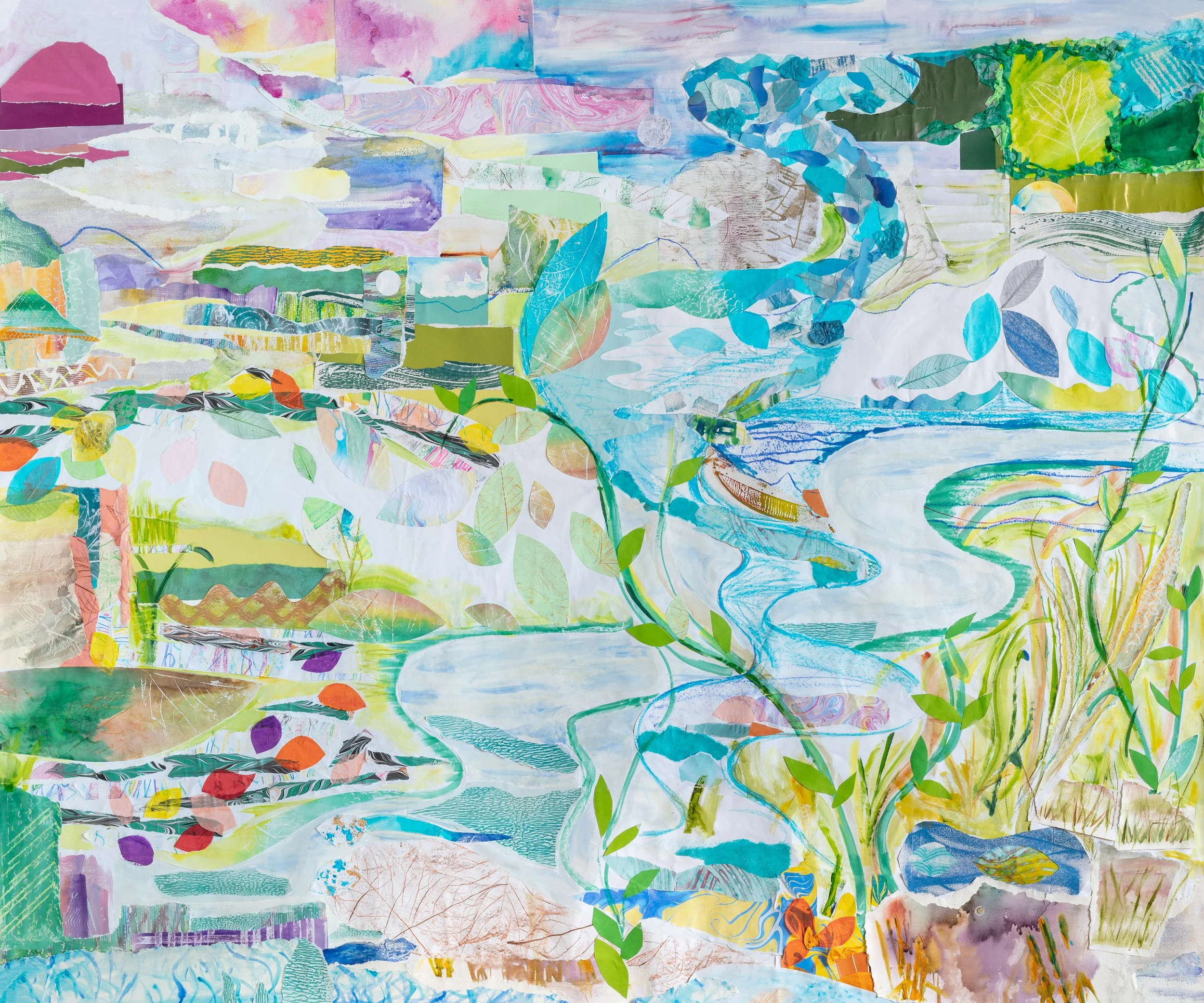Please find a transcript for this audio below the images.
We are so pleased to share our nine feature artworks created for North View - selecting one will take you to listen to its guided mindful audio - you can find out more about the project below.
'On looking at the artwork and listening to the mindful audio my feelings were replaced by peace, by calm and a quietly joyful feeling.'
Art and Mindfulness
Lucentia Design established their ‘Silver Lining Group’ in 2022 as part of their process to create relevant and supportive original artworks for North View, a new 150 bed adult acute mental health service for Greater Manchester Mental Health NHS Foundation Trust in the environs of North Manchester General Hospital.
The Silver Lining Group is made up of people with lived experience and carers who were invited to join and actively help create feature artworks and influence designs throughout this building which opened in November 2024. It also reached out to Park House adult acute mental health service users through an in-depth and insightful creative engagement programme which ran from 2022 to 2024.
Our Silver Lining Group met monthly at Manchester Art Gallery’s studio space and these mixed media artworks were initiated on each session in response to the names of each of the nine wards: Clover, Acorn, River, Blossom, Spring, Meadow, Forest, Fern and Vale. They were then finished at Lucentia Studios. We even had the privilege of River being showcased at the Art Gallery’ community space in Room to Breathe from October to December in 2023.
We often talked about the artworks, the process, the techniques and how we each had a favourite. We were so pleased with the outcomes of these co-produced artworks that we commissioned Louise Thompson at Mindful Museums to create a guided audio for each one. There is also a transcript on each artwork page should you need it.
The artworks themselves are large scale, from 1.5mx1.5m to 1.5x2m - they really are something else seen in person but we hope the images below do them justice and you can find time to pause and reflect on the gorgeous textures and colours alongside the many hands that helped make them. They were used in North View for each ward entrance as a circular crop and each ward has its own short prose which has been inspired by traditional haiku about nature. We have included these with each artwork for your enjoyment.
A huge THANK YOU again to everyone that contributed.
Above are our nine feature artworks - selecting one will take you to listen to its guided mindfulness audio.
Transcript for audio ‘Introduction to Mindfulness’
Mindfulness is a simple form of meditation that is all about bringing our mind into the present moment and becoming more aware of our thoughts and feelings as well as our surroundings. Moment by moment.
A typical mindfulness practice consists of paying attention to one of 3 anchors. Either your breathing, physical sensations in your body or one of your senses. And bringing your attention back to the anchor whenever you’ve noticed that it has wandered away .
The reason why we focus on these 3 things is because we only ever experience them in the here and now and so they anchor us in the present.
Let’s think about that for a moment - our breathing only occurs in the present, we breathe in and out - it’s a physiological act that happens in the here and now.
Our body can anchor us in the present too - our minds can time travel to the past and future but our bodies always stay here. When we feel a physical sensation - like our heartbeat, for instance or a tingling or tightness in our muscles - it is happening in the here and now.
And we only experience a sense in the present too. We can remember (past tense) what chocolate tastes like because we’ve had it before, we know that it’s sweet and creamy but we can’t taste it unless it is on our tongue and we are eating right now. Or we can imagine (future tense) what a warm shower is going to feel like at the end of the day, but we can’t actually feel it unless we’re in the shower and the water is on our skin.
So our senses can be a helpful tool to help bring ourselves into the present. And this can benefit our mood and wellbeing, especially at times when we find ourselves ruminating over past events and experiences or becoming overwhelmed with worry about things that might or might not happen in the future. Coming back to our senses helps bring us back to a place of safety and ease.
In these mindfulness audio guides we’re going to use our sense of sight to practice being in the moment. I’ll guide you in exploring artworks; paying particular attention to the formal elements, things like colour, line, shape, texture and composition. No previous experience of art or meditation is needed to do any of this.
And it’s important to know that you can pause the audio at any time if you want a break. You can always come back to it later, if you like. It’s up to you.
So why not sit back, get comfortable and enjoy some moments of mindfulness with art.









